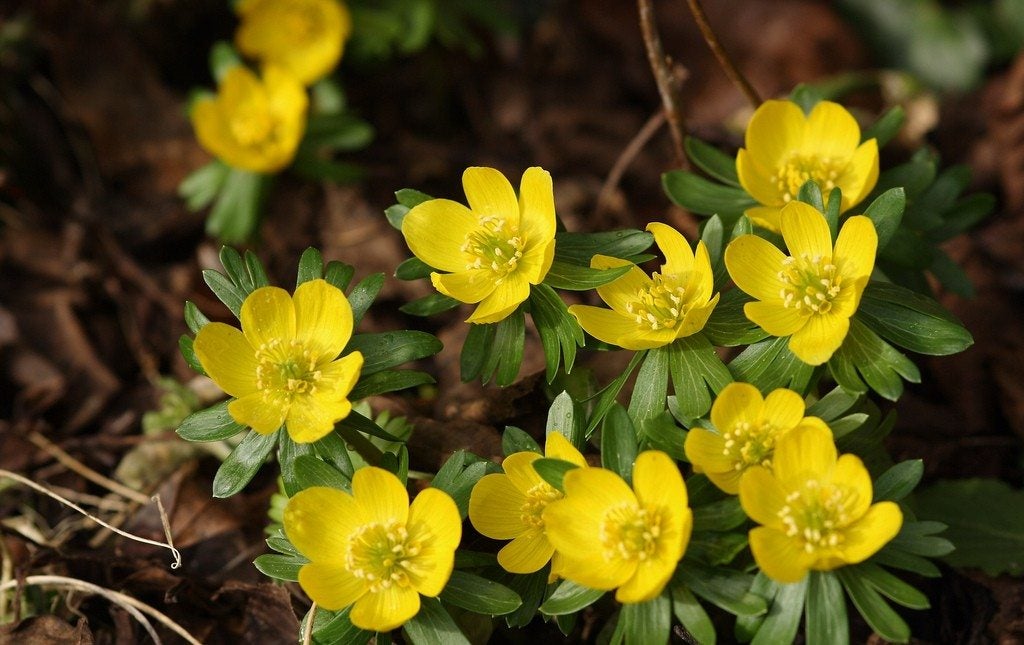Learn About The Care Of Winter Aconite Plants
Bright and pretty winter aconite shows up even earlier than crocus as a harbinger of spring.

Info About Winter Aconite - Tips On Growing Winter Aconite
While a crocus is the traditional harbinger of warmer weather to come, one brightly colored flower beats even that early riser-- the winter aconite (Eranthus hyemalis).
Beginning early in March, we northern gardeners begin to eagerly scour our gardens in search of a telltale sprig of green, some sign that spring is on the way and new growth is beginning.
Winter aconite plants frequently come up through the snow, they don't mind a small amount of frost, and will open their buttercup-like blooms at the earliest chance. For gardeners who like to plant perennials that greet you in the spring, learning about winter aconite can provide valuable information.
Care of Winter Aconite Plants
Unlike tulips and crocus, winter aconite bulbs aren't actually bulbs at all but tubers. These fleshy roots store moisture and food for the plant's growth and hibernation over the winter just like a bulb does.
They should be planted late in the fall at the same time you dig in other spring-flowering bulbs. These small tubers need to be well-protected from harsh winter weather, so plant them about 5 inches (12.5 cm) deep from the base of the tuber to the surface of the soil.
Winter aconite is a small plant, no more than 4 inches (10 cm) across for most plants, so don't worry about crowding them out in the garden bed. Plant the tubers about 6 inches (15 cm) apart to allow room for spreading and bury them in groups of odd numbers for the most attractive display.
Early in the spring, you'll see green shoots appear, and shortly after you'll find bright yellow flowers that look like tiny buttercups. These blooms are no more than an inch (2.5 cm) across and are held about 3 to 4 inches (7.5-10 cm) above the ground.
Gardening tips, videos, info and more delivered right to your inbox!
Sign up for the Gardening Know How newsletter today and receive a free copy of our e-book "How to Grow Delicious Tomatoes".
The growing winter aconite will fade away after a few days, leaving an attractive crop of foliage to cover spring mud until later flowers appear.
The care of winter aconite consists mainly of simply leaving it alone to live and thrive. As long as you have planted the tubers in fertile, well-drained soil, they will grow and spread year after year.
Do not dig up the plants when they are done blooming. Allow the foliage to die back naturally. By the time your lawn is ready to mow, the leaves on the winter aconite will be withered and browned, ready to be cut off along with the first blades of grass of the year.
-
 Looking For Plants To Give You The Soft And Fuzzies? Try These 5 Fuzzy Leaf Plant Options
Looking For Plants To Give You The Soft And Fuzzies? Try These 5 Fuzzy Leaf Plant OptionsLovers of texture, drama, silver foliage and tactile plants will adore these special sensory garden additions. These fuzzy leaf plant options will leave you all aglow
By Susan Albert
-
 Get Ready For A Summer Of Hummers! Grow These Full Sun Hummingbird Plants and Flowers
Get Ready For A Summer Of Hummers! Grow These Full Sun Hummingbird Plants and FlowersIf you’re lucky enough to enjoy a sunny backyard, make sure you are maxing out on your pollinator opportunities and grow these full sun hummingbird plants and flowers
By Tonya Barnett